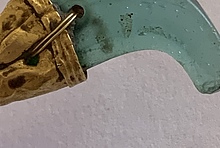Home PageAbout MindatThe Mindat ManualHistory of MindatCopyright StatusWho We AreContact UsAdvertise on Mindat
Donate to MindatCorporate SponsorshipSponsor a PageSponsored PagesMindat AdvertisersAdvertise on Mindat
Learning CenterWhat is a mineral?The most common minerals on earthInformation for EducatorsMindat ArticlesThe ElementsThe Rock H. Currier Digital LibraryGeologic Time
Minerals by PropertiesMinerals by ChemistryAdvanced Locality SearchRandom MineralRandom LocalitySearch by minIDLocalities Near MeSearch ArticlesSearch GlossaryMore Search Options
The Mindat ManualAdd a New PhotoRate PhotosLocality Edit ReportCoordinate Completion ReportAdd Glossary Item
Mining CompaniesStatisticsUsersMineral MuseumsClubs & OrganizationsMineral Shows & EventsThe Mindat DirectoryDevice SettingsThe Mineral Quiz
Photo SearchPhoto GalleriesSearch by ColorNew Photos TodayNew Photos YesterdayMembers' Photo GalleriesPast Photo of the Day GalleryPhotography
╳Discussions
💬 Home🔎 Search📅 LatestGroups
EducationOpen discussion area.Fakes & FraudsOpen discussion area.Field CollectingOpen discussion area.FossilsOpen discussion area.Gems and GemologyOpen discussion area.GeneralOpen discussion area.How to ContributeOpen discussion area.Identity HelpOpen discussion area.Improving Mindat.orgOpen discussion area.LocalitiesOpen discussion area.Lost and Stolen SpecimensOpen discussion area.MarketplaceOpen discussion area.MeteoritesOpen discussion area.Mindat ProductsOpen discussion area.Mineral ExchangesOpen discussion area.Mineral PhotographyOpen discussion area.Mineral ShowsOpen discussion area.Mineralogical ClassificationOpen discussion area.Mineralogy CourseOpen discussion area.MineralsOpen discussion area.Minerals and MuseumsOpen discussion area.PhotosOpen discussion area.Techniques for CollectorsOpen discussion area.The Rock H. Currier Digital LibraryOpen discussion area.UV MineralsOpen discussion area.Recent Images in Discussions
Mineralogical ClassificationIMA 2013-111 = jahnsite-(CaFeMg)
11th Jan 2017 18:19 UTCMarco E. Ciriotti Manager
▪ Elliott, P. (2016): Jahnsite-(CaFeMg), a new mineral from Tom’s quarry, South Australia: description and crystal structure. European Journal of Mineralogy, 28, 991-996.
Abstract:
Jahnsite-(CaFeMg) is a new member of the whiteite–jahnsite group from Tom’s Quarry, Kapunda, South Australia, Australia where it occurs as a low-temperature secondary mineral. Jahnsite-(CaFeMg) forms brownish orange prismatic crystals to 0.2 mm in length. Crystals are transparent, have a vitreous lustre and a good cleavage on {001}. The streak is white. The Mohs hardness is ∼4, the tenacity is brittle and the fracture is splintery. The measured density is 2.76(4) g/cm3 and the calculated density is 2.772 g/cm3. Optically jahnsite-(CaFeMg) is biaxial negative with α = 1.629(4), β = 1.658(4), γ = 1.677(4) and 2Vcalc = 76.8°. Electron-microprobe analyses provided: Na2O 0.65, CaO 4.74, Al2O3 0.06, Fe2O3 20.18, FeO 9.85, MgO 6.47, MnO 5.02, P2O5 34.41, H2Ocalc 19.46 (from crystal-structure analysis), total 100.84 wt.%. The empirical formula (based on 26 oxygen atoms) is: (Ca0.70Na0.17Mn2+0.16)Σ1.03Fe2+1.00(Mg1.33Mn2+0.43Fe3+0.24)Σ2.00(Fe3+1.99Al0.01)Σ2.00(PO4)4.01(OH)2.10H2O7.88. Jahnsite-(CaFeMg) is monoclinic, P2/a, a = 14.975(5), b = 7.1645(14), c = 9.928(2) Å, β = 110.65(3)°, V = 996.7(5), Å3 and Z = 2. The eight strongest lines in the powder diffraction pattern are [d(Å)(I)(hkl)]: 9.339(100)(001); 4.923(20)(21–1, 111, 310); 3.562(20)(400); 3.518(20) (112, 40–2); 3.453(20)(202); 2.965(20)(221); 2.839(35)(5-1-1); 2.592(20)(203). The crystal structure has been refined using a single crystal twinned on {001} to R1 = 0.0517 on the basis of 1616 observed reflections with Fo > 4σ(Fo) and confirms a whiteite–jahnsite-type structure.




Mindat.org is an outreach project of the Hudson Institute of Mineralogy, a 501(c)(3) not-for-profit organization.
Copyright © mindat.org and the Hudson Institute of Mineralogy 1993-2024, except where stated. Most political location boundaries are © OpenStreetMap contributors. Mindat.org relies on the contributions of thousands of members and supporters. Founded in 2000 by Jolyon Ralph.
Privacy Policy - Terms & Conditions - Contact Us / DMCA issues - Report a bug/vulnerability Current server date and time: May 14, 2024 07:30:42
Copyright © mindat.org and the Hudson Institute of Mineralogy 1993-2024, except where stated. Most political location boundaries are © OpenStreetMap contributors. Mindat.org relies on the contributions of thousands of members and supporters. Founded in 2000 by Jolyon Ralph.
Privacy Policy - Terms & Conditions - Contact Us / DMCA issues - Report a bug/vulnerability Current server date and time: May 14, 2024 07:30:42











